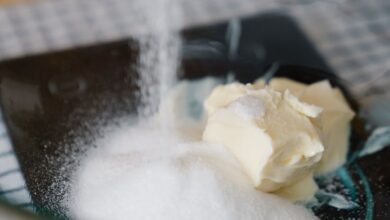How to Choose Durable Bread Pans
When it comes to baking bread, the choice of pan can significantly impact the outcome of your loaf. A durable bread pan not only ensures even cooking but also contributes to the crust’s quality and the bread’s overall texture. With a wide variety of options on the market, selecting the right one may feel overwhelming. Here’s a guide to help you navigate the world of bread pans and find the perfect fit for your baking adventures.
Material Matters
The material of your bread pan plays a crucial role in its durability and performance. Common materials include metal, glass, silicone, and ceramic, each with unique properties.
Metal pans, particularly those made of aluminum or stainless steel, are popular for their ability to conduct heat uniformly. They typically produce a beautifully browned crust and are generally more durable than other materials. Look for heavy-gauge options, as they resist warping and can withstand high temperatures.
Glass pans, while less common, allow you to monitor the browning of your bread. They retain heat well but may not be as robust as metal pans and can shatter if exposed to sudden temperature changes. If you opt for glass, choose tempered varieties for added strength.
Silicone pans are flexible and non-stick, making them easy to clean. However, they may not provide the same browning effect as metal or glass, which can affect the texture of your bread. They are an excellent choice for those seeking convenience but may not be the best option for serious bakers.
Ceramic pans offer a stylish alternative, providing even heat distribution and a rustic appearance. They are generally durable but can be prone to chipping if mishandled. Choose high-quality ceramic for the best results and longevity.
Size and Shape
Bread pans come in various sizes and shapes, and selecting the right one is essential for achieving your desired loaf. Standard loaf pans typically measure 9×5 inches, ideal for most bread recipes. However, if you frequently bake larger loaves or have specific recipes in mind, consider investing in a larger pan.
Beyond size, the shape of the pan can influence your bread’s texture. Traditional loaf pans yield a classic sandwich shape, while specialty pans, like those for baguettes or ciabatta, create unique results. If you’re adventurous in your baking, explore different shapes to expand your repertoire.
Non-Stick Coatings
Many bread pans come with non-stick coatings, which can be a major selling point for ease of use and cleaning. However, be cautious when choosing non-stick options. Some coatings may wear off over time, and the durability of the pan can diminish alongside it.
If you prefer a non-stick finish, opt for high-quality brands that use PFOA-free coatings. Alternatively, you can season a metal pan with oil or butter to create a natural non-stick surface. This method is often more durable and can enhance the flavor of your bread.
Budget Considerations
While investing in a durable bread pan is essential, it doesn’t mean you must break the bank. Quality options exist at various price points. It’s wise to set a budget but also remember that a good bread pan can last for years, making it a worthwhile investment.
Research brands known for their durability and customer satisfaction. Reading reviews can provide insight into the product’s performance and longevity. Sometimes, spending a bit more initially can save you money in the long run by avoiding frequent replacements.
Care and Maintenance
To prolong the life of your bread pan, proper care is essential. Follow the manufacturer’s instructions for cleaning and storage. For metal pans, avoid using abrasive scrubbers that can scratch the surface. If you use glass or ceramic, let them cool before washing to prevent cracking.
Regularly check for signs of wear or damage. If you notice warping or scratches in a non-stick surface, it may be time for a replacement. Keeping an eye on your tools ensures they perform well and contribute to successful baking.
Selecting the Right Bread Pan for You
Choosing the right bread pan involves considering material, size, shape, non-stick features, budget, and maintenance. By understanding these factors, you can select a durable pan that meets your baking needs and enhances your culinary creations. A well-chosen bread pan not only makes baking easier but also elevates the quality of your homemade loaves, turning each baking session into a delightful experience. Happy baking!







